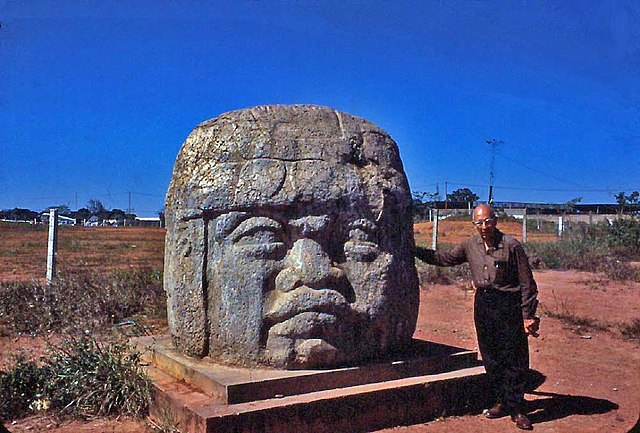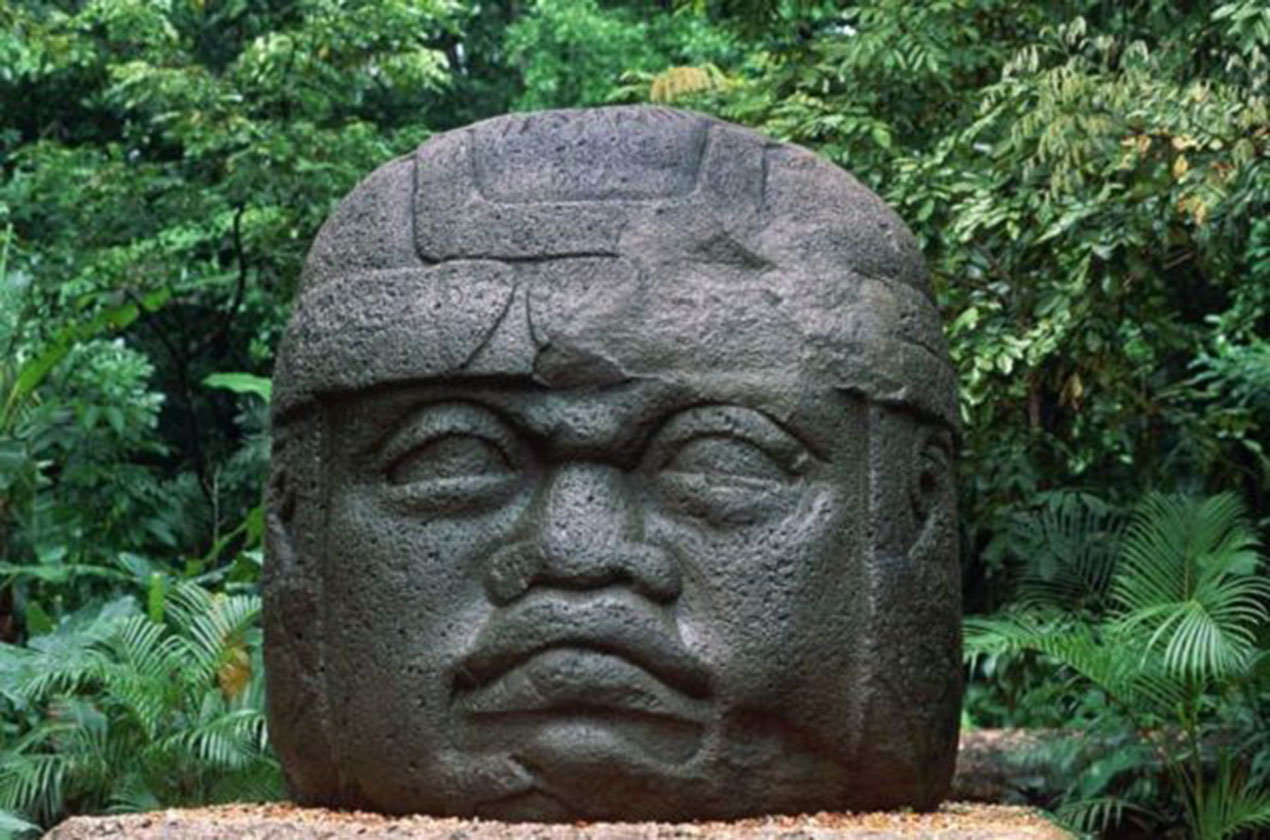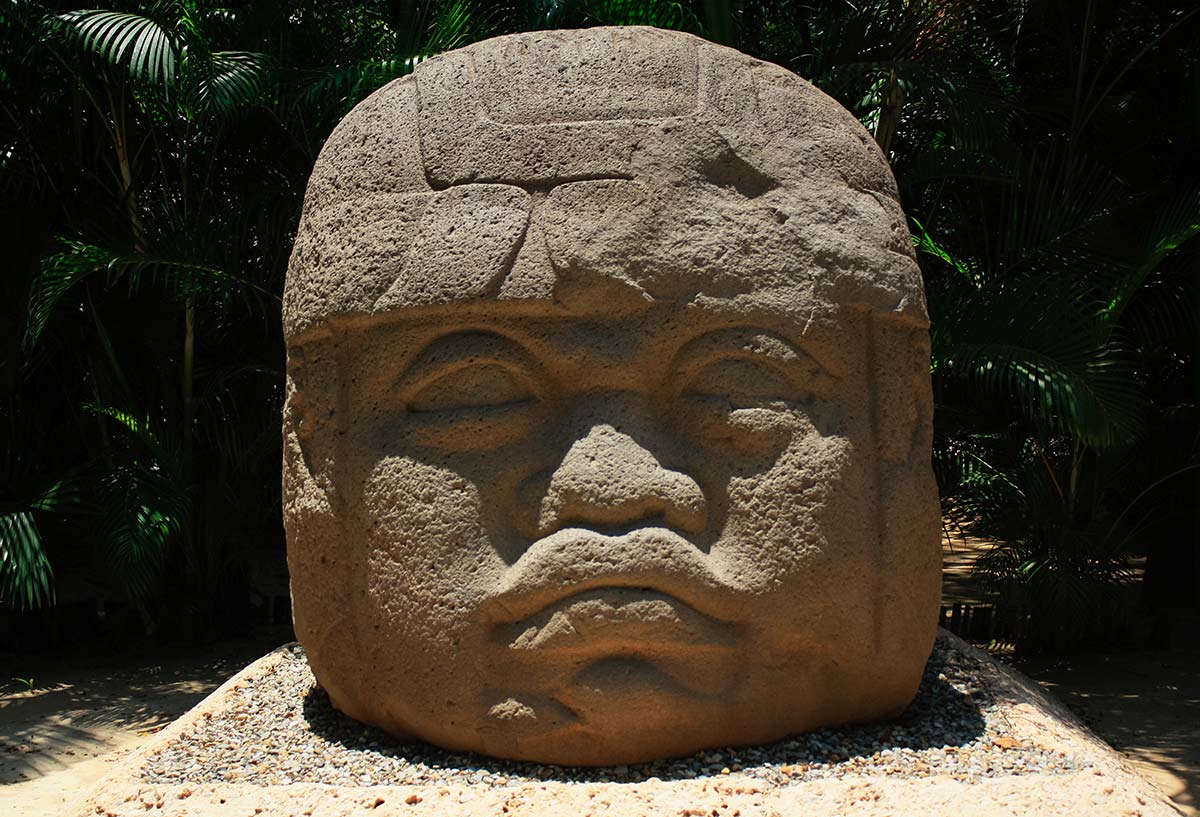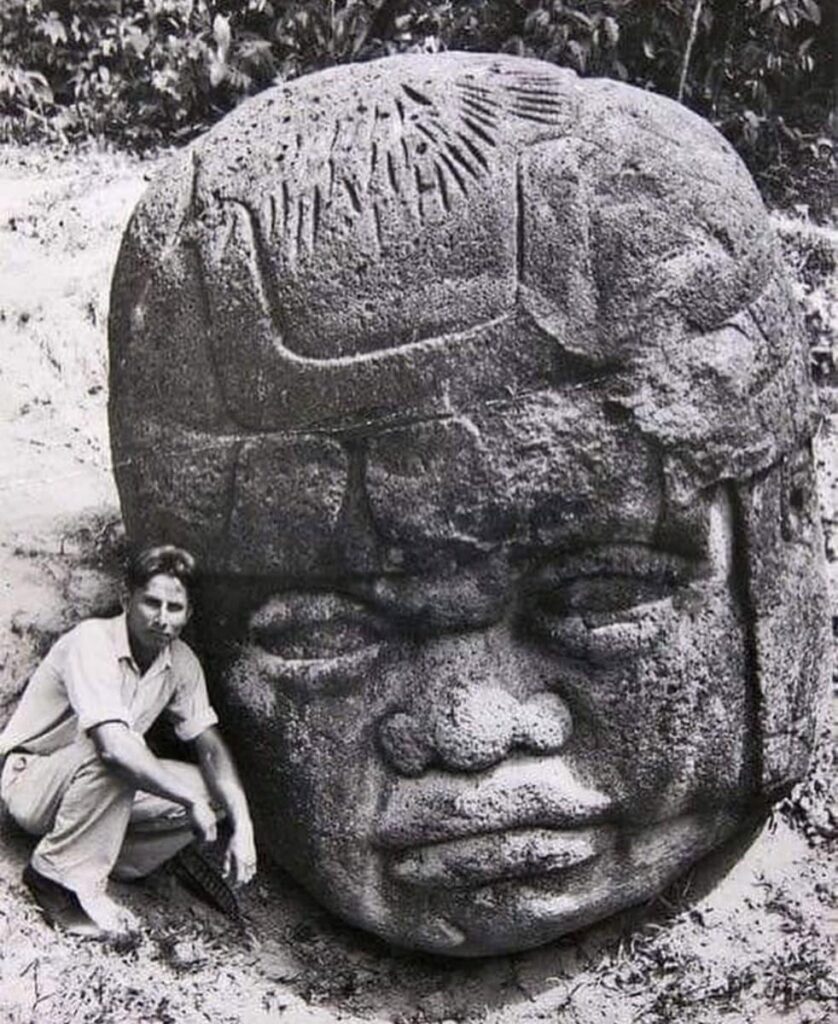Introduction
The Olmec civilization, flourishing in what is now modern-day Mexico from roughly 1200 BC to 400 BC, stands as one of Mesoamerica’s earliest and most influential cultures. Renowned for their expertise in agriculture, trade, and artistry, the Olmecs left an indelible mark on the region, paving the way for subsequent civilizations like the Maya and Aztecs.

One of the most awe-inspiring achievements of the Olmecs is the creation and transportation of their colossal stone heads. These massive sculptures, weighing several tons each, were carved from basalt and transported over 80 kilometers (50 miles) of dense rainforest and swampy lowlands. The sheer logistical challenge of moving such enormous stones without the aid of wheels or draft animals remains a captivating mystery, highlighting the extraordinary ingenuity and determination of the Olmec people.
In this blog post, we will delve into the intriguing story of how the Olmecs accomplished this remarkable feat, exploring the various theories and evidence that shed light on their engineering prowess and the cultural significance of these monumental works of art.
The Olmec Colossal Heads: A Testimony to Artistic Mastery and Societal Sophistication
The Olmec colossal heads, known as the “Olmec Heads,” are among the most iconic and enigmatic artifacts of the ancient world. These massive sculptures, each weighing several tons and standing up to 9 feet 4 inches tall, were carved from solid basalt and adorned with unique headdresses, likely representing revered Olmec rulers.

The sheer size and scale of these heads are astounding, especially considering the technological limitations of the Olmec civilization. Without the use of wheels or draft animals, the Olmecs faced a formidable challenge in transporting these massive stones from their quarry in the Tuxtla Mountains to their final resting places, such as the site of La Venta.
The fact that the Olmecs were able to accomplish this feat is a testament to their engineering prowess, organizational skills, and the sophistication of their societal structure. The ability to mobilize a workforce capable of moving these colossal heads across such a vast distance speaks to the Olmecs’ impressive level of social organization and the power wielded by their rulers.
Theories on Olmec Head Transportation
Over the years, scholars and researchers have proposed various theories to explain how the Olmecs were able to transport their massive stone heads across the rugged terrain of Mesoamerica. While the exact methods remain a mystery, these theories offer valuable insights into the Olmecs’ ingenuity and the challenges they faced.
Wooden Rollers and Sleds
One of the most widely accepted theories suggests that the Olmecs used a combination of wooden rollers and sleds to move the stone heads. By placing the heads on large, log-based rollers, the Olmecs could have reduced the friction and effort required to transport the massive sculptures. Additionally, they may have used sturdy wooden sleds to drag the heads over particularly difficult terrain, such as swampy areas or steep inclines.
This method, while labor-intensive, would have allowed the Olmecs to leverage the natural resources available in their environment, such as the abundant hardwood trees, to overcome the logistical challenges of moving the colossal heads.
Rope and Manpower
Another theory proposes that the Olmecs relied on a vast network of human labor to move the stone heads. By harnessing the collective strength and coordination of a large workforce, the Olmecs may have been able to transport the heads using ropes and brute force.
This approach would have required meticulous planning, organization, and the mobilization of a significant number of people. The Olmecs’ ability to coordinate such a massive undertaking further underscores the sophistication of their societal structure and the authority wielded by their leaders.

Water Transportation
Some researchers suggest that the Olmecs may have utilized the region’s extensive network of rivers and waterways to transport the stone heads. By constructing large, sturdy rafts or barges, the Olmecs could have floated the heads along the waterways, which would have been a more efficient method of transportation compared to overland routes.
This theory is supported by the fact that many of the Olmec archaeological sites are located near major rivers and coastal areas, indicating the importance of water-based transportation in their society.
Combination of Methods
It is likely that the Olmecs employed a combination of these methods, adapting their transportation strategies to the specific challenges posed by the terrain and the size of the stone heads. For example, they may have used wooden rollers and sleds for overland transport, supplemented by water-based transportation along the region’s rivers and waterways.
The versatility and adaptability of the Olmecs’ transportation methods highlight their remarkable problem-solving skills and their ability to harness the resources available to them, even in the face of seemingly insurmountable challenges.
The Cultural Significance of the Olmec Colossal Heads
Beyond the impressive engineering feats required to transport these massive stone sculptures, the Olmec colossal heads also hold immense cultural significance. These monumental works of art serve as a testament to the Olmecs’ artistic prowess, their societal structure, and the power and influence of their rulers.

Representations of Olmec Rulers
The Olmec colossal heads are believed to be representations of the civilization’s most influential rulers or leaders. The unique headdresses and facial features of each head suggest that they were carefully crafted to depict specific individuals, rather than generic figures.
By creating these larger-than-life sculptures, the Olmecs were able to immortalize their rulers and solidify their authority within their society. The sheer size and scale of the heads convey a sense of power, prestige, and divine right, underscoring the Olmecs’ sophisticated understanding of the relationship between art, politics, and religion.
Reflection of Olmec Societal Structure
The Olmec colossal heads also provide valuable insights into the structure and organization of Olmec society. The ability to mobilize the resources and labor necessary to transport and carve these massive sculptures suggests a highly stratified and hierarchical social system.
The Olmecs likely had a centralized, authoritarian form of government, with a ruling elite that commanded the resources and manpower required for such ambitious undertakings. This social structure enabled the Olmecs to coordinate and execute large-scale projects, such as the transportation and installation of the colossal heads, which in turn reinforced the power and status of the ruling class.
Cultural and Religious Significance
In addition to their political and social significance, the Olmec colossal heads also held deep cultural and religious meaning within Olmec society. These sculptures may have been imbued with spiritual or supernatural qualities, serving as representations of deities, ancestral figures, or the divine right of Olmec rulers.
The placement of the colossal heads at important Olmec sites, such as La Venta, further underscores their cultural and religious significance. These monumental works of art were likely integral to Olmec rituals, ceremonies, and the broader cosmological beliefs of the civilization.
Conclusion: The Enduring Legacy of the Olmec Colossal Heads
The Olmec colossal heads stand as a testament to the extraordinary ingenuity, determination, and cultural sophistication of one of Mesoamerica’s earliest and most influential civilizations. The sheer logistical challenge of transporting these massive stone sculptures across rugged terrain, without the aid of wheels or draft animals, is a captivating mystery that continues to captivate scholars and the public alike.
Through the study of these monumental works of art, we gain valuable insights into the Olmecs’ engineering prowess, their societal structure, and the cultural and religious significance they held within their civilization. The legacy of the Olmec colossal heads continues to inspire and fascinate, reminding us of the remarkable achievements of ancient peoples and the enduring power of human creativity and determination.
As we unravel the mysteries surrounding the transportation and creation of the Olmec colossal heads, we are left in awe of the Olmecs’ remarkable accomplishments and the lasting impact they had on the cultural and artistic development of Mesoamerica. The Olmec colossal heads stand as a testament to the enduring spirit of human ingenuity and the timeless power of monumental art to captivate and inspire.

